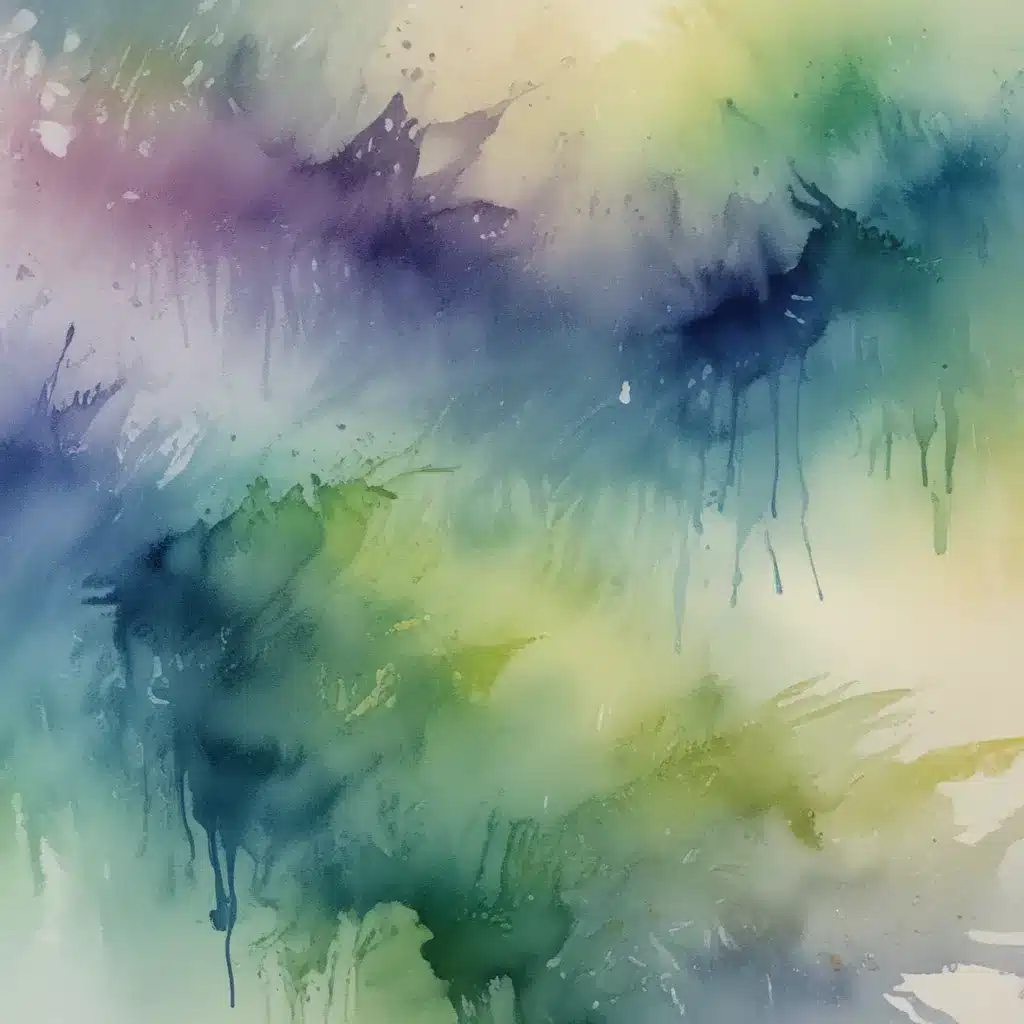
As an experienced art writer and creative consultant for Pencil and Paint Muse, I’ve had the privilege of exploring a wide range of artistic techniques, from the precision of pencil drawing to the dynamic expressiveness of mixed media. Today, I’m excited to delve into the captivating world of watercolour resist techniques, focusing on how they can be used to build depth and dimension in your artwork.
Now, this might seem counterintuitive…
Mastering Watercolour Resist
Watercolour resist is a versatile technique that allows you to selectively control and preserve areas of your painting, creating intriguing visual contrasts and textural effects. The basic principle involves applying a resist medium, such as wax, oil pastels, or masking fluid, to specific areas of the paper before applying watercolour washes. When the watercolour is applied, the resist medium repels the paint, leaving those areas untouched and revealing the white of the paper.
This technique opens up a world of creative possibilities. By strategically applying and removing the resist, you can create unique patterns, designs, and even masking effects within your watercolour paintings. The preserved areas can then be further enhanced with additional layers of paint, drawing, or mixed media elements, allowing you to build up depth and visual interest in your artwork.
Exploring Resistant Materials
The choice of resist medium is crucial in achieving the desired effects. Wax-based products, such as crayon, oil pastels, or even candle wax, are a popular option as they create a strong resist that can withstand multiple washes of watercolour. The waxy texture of these materials allows them to be applied with precision, enabling you to draw intricate patterns or shapes that will be protected from the paint.
Another versatile resist medium is masking fluid, also known as frisket. This liquid latex-based product can be painted or stippled onto the paper, creating a protective barrier that preserves the white of the paper. Once the watercolour is dry, the masking fluid can be peeled or rubbed off, revealing the untouched areas beneath.
For a more organic and textural approach, consider using household items as resist tools. Sponges, plastic wrap, and even salt can be used to create unique patterns and effects when applied to the paper before painting. The unpredictable nature of these materials can add an element of surprise and spontaneity to your artwork.
Layering for Depth
One of the key advantages of watercolour resist techniques is their ability to build depth and dimension within your paintings. By strategically layering the resist medium and watercolour washes, you can create a sense of depth and visual interest that is difficult to achieve with traditional watercolour techniques alone.
Begin by applying your resist medium to the paper, creating a design or pattern that will serve as the foundation for your painting. Once the resist is dry, apply a base layer of watercolour, allowing the paint to interact with the exposed areas of the paper. As the paint dries, you can then remove the resist, revealing the preserved white areas.
From this foundation, you can continue to layer additional watercolour washes, allowing each layer to dry fully before adding the next. This gradual buildup of transparent colour creates a sense of depth and luminosity, with the preserved white areas acting as highlights and adding to the overall visual interest.
To further enhance the depth, consider incorporating mixed media elements into your painting. Pencil, ink, or even collage materials can be used to add details, textures, and contrast to the preserved areas, elevating the overall composition.
Embracing Creative Experimentation
One of the most rewarding aspects of watercolour resist techniques is the element of surprise and discovery. As you experiment with different resist media, application methods, and layering techniques, you’ll find that each approach yields unique and often unexpected results.
Encourage yourself to step outside your comfort zone and try new materials or application methods. Explore the use of sponges, toothbrushes, or even your fingers to apply the resist medium, and observe how the resulting patterns and textures interact with the watercolour washes.
Remember, the true joy of this technique lies in the process of exploration and discovery. Embrace the unpredictable nature of watercolour and resist, and allow yourself to be guided by the organic unfolding of your artwork. Each experiment will teach you something new, expanding your artistic repertoire and inspiring you to push the boundaries of what’s possible.
Practical Application
To put these watercolour resist techniques into practice, consider the following step-by-step approach:
-
Prepare your surface: Choose a high-quality watercolour paper or board that can withstand multiple layers of paint and resist media.
-
Apply the resist medium: Using a wax-based crayon, oil pastel, or masking fluid, create a design or pattern on your paper, ensuring that the resist is applied evenly and with intention.
-
Add the first watercolour wash: Once the resist is dry, begin applying your first layer of watercolour, allowing the paint to interact with the exposed areas of the paper.
-
Remove the resist: When the watercolour is dry, gently remove the resist medium, revealing the preserved white areas.
-
Build up layers: Continue to apply additional watercolour washes, allowing each layer to dry fully before adding the next. Experiment with different colour combinations, wet-on-wet techniques, and transparency levels to create depth and visual interest.
-
Incorporate mixed media: Consider adding pencil, ink, or collage elements to the preserved areas, further enhancing the depth and character of your painting.
-
Embrace experimentation: Throughout the process, be open to unexpected results and don’t be afraid to try new techniques or materials. Each experiment will contribute to your growing artistic skills and knowledge.
By embracing the watercolour resist technique, you’ll unlock a world of creative possibilities and discover new ways to infuse your artwork with depth, texture, and visual intrigue. So, grab your paints, resist media, and let your imagination soar!
Example: Pencil Portrait Challenge 2024